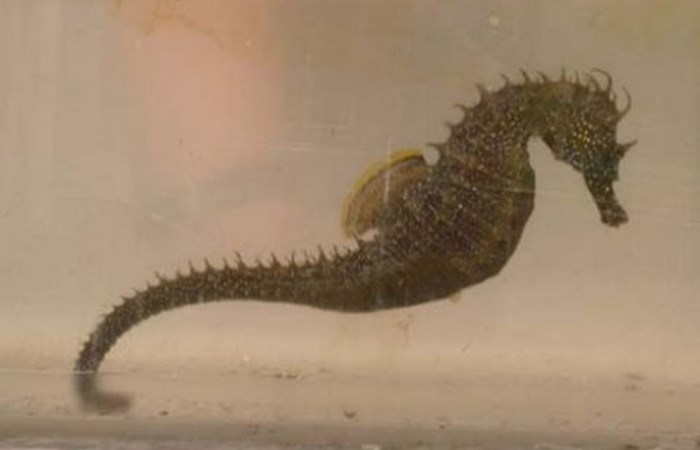Rare seahorse found in Thames NEWS

The discovery of a baby seahorse in the Thames at Greenwich, South London suggests there may be a colony breeding in the UK rivers for the first time.
Found further inland than any seahorse has been seen before, the rare short-snouted seahorse is believed to be evidence of a colony. The 2 inch juvenile seahorse was found in a routine fisheries survey at Greenwich, despite being most commonly found in the Mediterranean and Canary Islands.
The short-snouted seahorse has, on occasion, been seen on the coasts of Britain and even in the Thames Estuary, however it has never been recorded as far inland before.
Emma Barton, the Environment Agency's fisheries officer, said: 'This is a really good sign that seahorse populations are not only increasing but spreading to locations where they haven't been seen before. We routinely survey the Thames at this time of year and this is a really exciting discovery.
'We hope that further improvements to water quality and habitat in the Thames will encourage more of these rare species to take up residence in the river.'
A survey in 1958 showed the Thames was biologically dead, with no viable fish populations for miles, but since the river has undergone dramatic changes, it now supports roughly 125 species of fish.
The size of the seahorse found suggests there may be a breeding colony, as the short-snouted species mature at 6 inches. Though seahorses are, as their name suggests, creatures of the sea, they can survive in water with a low salinity content.
In 2008 several seahorses were found near the mouth of the Thames, however this is the furthest inland they have ever been discovered.

 Popular
Popular Recent
Recent Comments
Comments

















